Der ultimative Leitfaden zum sicheren Dekantieren von Parfüm für Vielreisende
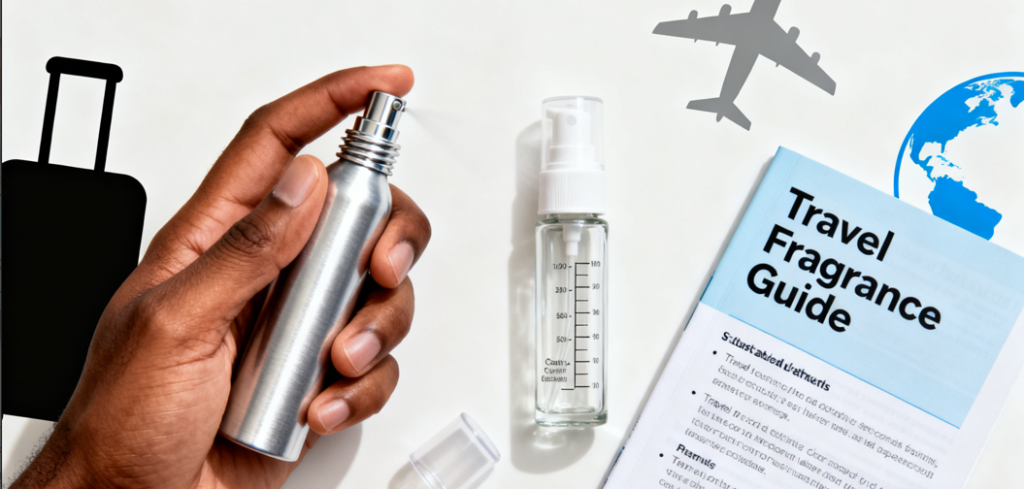
Der ultimative Leitfaden zum sicheren Dekantieren von Parfüm für Vielreisende Warum müssen Sie Parfüm auf Reisen dekantieren? Geschäftsreisende und Urlauber ziehen es vor, ihr Gepäck so leicht wie möglich zu halten. Liebhaber von Parfüms können sich jedoch nicht vorstellen, ohne ihre Lieblingsdüfte zu sein. Manchmal kann eine Reise eine Woche oder sogar einen Monat dauern, so dass für verschiedene Anlässe unterschiedliche Parfums benötigt werden. Parfümflakons in voller Größe sind merklich schwer, und Parfümflakons mit einem Inhalt von mehr als 100 ml passieren möglicherweise nicht die Sicherheitskontrollen der Fluggesellschaften. Außerdem können große Glasflaschen im aufgegebenen Gepäck leicht zerbrechen. An dieser Stelle werden tragbare Parfümzerstäuber unverzichtbar. Diese Zerstäuber gibt es in kleinen Größen wie 5 ml, 8 ml und 10 ml. Ihr Gehäuse besteht in der Regel aus robustem, sturzsicherem Aluminium, während die Innenbehälter aus Borosilikatglas gefertigt sind, das für seine Stabilität und seine nicht-reaktiven Eigenschaften mit Parfüm bekannt ist. Ausgestattet mit feinen Nebeldüsen sorgen sie dafür, dass die Parfümmoleküle vollständig und effektiv verteilt werden. Die Wahl des richtigen Parfümdekanters: Material und Aufbau Derzeit gibt es drei Haupttypen von Dekantern auf dem Markt, wobei Glas am häufigsten verwendet wird, gefolgt von Kunststoff. Metall wird hauptsächlich für die äußere Hülle verwendet, die den inneren Glasbehälter schützt. Parfümdekanter aus Glas: Bieten viele Vorteile: Sie sind stabil, hochtransparent für ein hochwertiges Gefühl, reagieren kaum mit dem Parfüm und sind sehr preiswert. Der Nachteil liegt auf der Hand: Sie sind beim Transport sehr zerbrechlich. Beim Auspacken ist Vorsicht geboten, um mögliche Schnittverletzungen durch Glasscherben zu vermeiden, und geformtes Glas ist in der Regel schwerer. Kunststoff-Karaffen: Ebenfalls weit verbreitet. Sie sind leicht, bruchsicher und sehr preiswert. Der Nachteil ist, dass sie nicht umweltfreundlich sind und nicht als hochwertig gelten, weshalb sie in entwickelten Märkten wie Europa, den USA und Australien weniger beliebt sind. Ihre Hauptmärkte liegen in Asien, Südamerika und Afrika. Zerstäuber mit Aluminiumhülle und Glaseinsatz: Der Anstieg dieser Zerstäuber steht im Zusammenhang mit dem Trend zum Parfümabonnement, der die Beliebtheit von tragbaren Dekantern für unterwegs erhöht. Das Aluminiumgehäuse bietet ein hochwertiges Gefühl und ermöglicht komplexe, komplizierte Designs, ideal für Nischen- und aufstrebende Marken, die eine einzigartige Identität suchen. Diese Art von Dekanter hat fast keine Nachteile, abgesehen von den höheren Kosten im Vergleich zu Standardplastik oder Glas. Im Allgemeinen machen die Verpackungskosten weniger als 1% des Verkaufspreises eines Parfüms aus, weshalb sich viele Kunden für unsere hochwertigen Aluminium-Parfümzerstäuber-Dekanter entscheiden. Wie kann man Parfüm richtig und sicher dosieren? Der Zweck des Dekantierens von Parfüm besteht darin, das Mitführen Ihres Parfüms auf Reisen, beim täglichen Pendeln oder zum Nachfüllen bequemer und sicherer zu machen. Eine unsachgemäße Handhabung kann jedoch zu Auslaufen, Verdunstung, Verunreinigung oder verändertem Duft führen. Im Folgenden finden Sie die sicherste und gängigste Methode zum Umfüllen, die für die meisten Parfüms und Reise-Dekanter (einschließlich des Parfümzerstäubers von EBI) geeignet ist. VorbereitungBevor Sie beginnen, bereiten Sie die folgenden Gegenstände vor: Original-Parfümflasche Leere Dekantierflasche Alkoholtücher / Papiertücher Kleiner Trichter / dünnes Röhrchen (bei Verwendung der Trichtermethode)Hinweis: Stellen Sie sicher, dass die Arbeitsfläche sauber ist, um den Kontakt mit Staub oder anderen Gerüchen zu vermeiden. Reinigung und Desinfektion der Karaffe Wischen Sie die Mündung der Karaffe, die Tülle und die Außenfläche des Innenbehälters mit einem Alkoholtuch ab. Wenn Sie eine Karaffe wiederverwenden, reinigen Sie sie mit Alkohol und lassen Sie sie vollständig an der Luft trocknen. Vergewissern Sie sich, dass keine Duftstoff- oder Flüssigkeitsreste von einem früheren Parfüm zurückbleiben. Dies verhindert eine Vermischung der Düfte, bakterielles Wachstum und Duftveränderungen. Methode 1: Befüllung von unten (am saubersten und sichersten)Geeignet für Dekanter mit einem Bodenfüllsystem, wie sie von EBI angeboten werden.Schritte: Richten Sie den Bodenmechanismus des Dekanters auf den Sprühkopf der Originalflasche aus. Drücken Sie senkrecht nach unten, damit das Parfüm in den Innenbehälter gesaugt werden kann. Bei jedem Druck werden ca. 0,1-0,2 ml angesaugt. Füllen Sie den Flakon bis zum Fassungsvermögen von 80-90%, um ein Auslaufen aufgrund von Luftdruckschwankungen zu verhindern. Nach dem Befüllen die untere Kappe fest verschließen. Methode 2: Spray-Transfer- oder Trichter-Methode (Traditionelle Universalmethode)Geeignet für Dekanter ohne Bodenfüllsystem.Schritte: Entfernen Sie den Sprühkopf von der Original-Parfümflasche (falls möglich). Richten Sie den Zerstäuber oder einen Trichter auf die Öffnung der Karaffe. Sprühen Sie mehrere Male vorsichtig in die Karaffe. Wischen Sie nach dem Dekantieren die Flaschenöffnung trocken, um alle äußeren Rückstände zu entfernen. Ziehen Sie alle Kappen fest an und stellen Sie sicher, dass alle Anschlüsse dicht sind. DichtheitsprüfungNach dem Dekantieren immer eine Dichtheitsprüfung durchführen: Vergewissern Sie sich, dass alle Teile des Dekanters fest verschlossen sind. Drehen Sie ihn vorsichtig um und schütteln Sie ihn 2-3 Sekunden lang. Prüfen Sie auf Anzeichen von Leckagen oder eine lockere Düse. Wenn ein Leck auftritt, öffnen Sie ihn erneut und überprüfen Sie die Dichtungen und Anschlüsse. Tipps zur Aufbewahrung und zum Transport Platzieren Sie das Gerät in Ihrem Handgepäck in einem durchsichtigen Beutel für Flüssigkeiten, um Sicherheitskontrollen zu erleichtern. Nicht am Boden des Koffers aufbewahren, um Quetschungen zu vermeiden. Vermeiden Sie direkte Sonneneinstrahlung und hohe Temperaturen (kann das Parfüm zersetzen). Der Parfümzerstäuber von EBI, der für Reisen und hochwertige Markenkooperationen entwickelt wurde, zeichnet sich durch ein auslaufsicheres, tropffestes und anpassbares Design mit mehreren patentierten Strukturen aus, wie z. B. dem Bodenfüllsystem, das ein bequemes und sauberes Dekantieren ermöglicht. Sicherheitskontrollen und Reisetipps (sowohl für Geschäfts- als auch für Urlaubsreisen) Die Art und Weise, wie Sie Ihren Parfümdekanter auf Reisen transportieren, ist sowohl für reibungslose Sicherheitskontrollen als auch für die Nutzungssicherheit entscheidend. Im Allgemeinen wird empfohlen, kleine Dekanter (≤10 ml) im Handgepäck mitzuführen. Sie sind nicht nur leicht und praktisch, sondern entsprechen auch den strengen Flüssigkeitsbeschränkungen der Fluggesellschaften. Alle Flüssigkeiten sollten zusammen in einem durchsichtigen, wiederverschließbaren Beutel untergebracht werden, um eine schnelle Kontrolle zu ermöglichen und zusätzliche Kontrollen zu vermeiden. Bei Langstreckenflügen oder Reisen durch mehrere Städte empfiehlt sich die Mitnahme einer zusätzlichen Karaffe für den Fall von Druckschwankungen oder versehentlichem Verlust. Bewahren Sie die Karaffe in einem leicht zugänglichen, nicht gequetschten Teil Ihres Gepäcks auf, um zu verhindern, dass sich die Düse durch den Druck anderer Gegenstände lockert oder ausläuft. Umgekehrt ist es nicht empfehlenswert, Parfüm im aufgegebenen Gepäck zu transportieren, da die Gefahr besteht, dass es bei der Handhabung zerbricht. Wenn Sie Ihr Parfüm richtig transportieren, kann es sicher reisen und Sie können es während Ihrer Reise mühelos auffrischen. Empfehlungen für Anwendungsfälle von Vielreisenden Für Geschäftsreisende und Weltenbummler kann das Mitführen einer hochwertigen Parfümkaraffe das Gesamterlebnis erheblich verbessern. Ein schnelles Auffrischen des Parfums vor dem Flug, während eines Zwischenstopps oder vor einem wichtigen Meeting sorgt für einen frischen Auftritt und stärkt das Selbstbewusstsein. Wechselnde Klimabedingungen und Luftfeuchtigkeit auf Reisen können dazu führen, dass sich Düfte schneller verflüchtigen, vor allem in heißen oder trockenen Gebieten.
Warum bestellten sie dringend individuelle Deo-Tuben?

Die Wahl von 527 Käufern: Warum sie dringend benutzerdefinierte Deo-Stick-Tuben bestellt haben? 1. Auf der 7. China International Import Expo unterzeichnete Zhejiang Ruimai Import & Export Co. einen Jahresvertrag über 160 Millionen Yen mit der portugiesischen Marke Mootaa für Spezialreiniger für Sportbekleidung, Unterwäsche und mehr. "Chinesische Verbraucher gehen von generischen zu szenariospezifischen Produkten über, was zu einem jährlichen Auftragswachstum von 20% führt", so Zhang Xuefeng, Vertreter des Unternehmens. Dieser Trend hat die Nachfrage nach Deodorantstiften angeheizt, die wegen ihrer Tragbarkeit, präzisen Dosierung und der Einhaltung der Vorschriften für Fluggesellschaften geschätzt werden und herkömmliche Sprays in den Bereichen Fitness und Reisen übertreffen. Gleichzeitig hat die EU-Verordnung über Verpackungsabfälle (PPWR), die ein Verbot von Einwegplastik bis 2030 vorsieht, dazu geführt, dass die Sticks aufgrund ihres minimalen Hohlraums (≤30%) eine konforme Lösung darstellen. Die Importplattformen in Zhejiang meldeten einen Anstieg der dringenden Bestellungen für wiederbefüllbare und biobasierte Tuben um 35% im Vergleich zum Vorjahr, wobei 527 Käufer der Nachhaltigkeit Priorität einräumten. 2. Gezielte Desodorierung: Von der Maskierung zur molekularen Neutralisierung: Die Nachfrage der Verbraucher nach Wirksamkeit verändert die Technologie: Zersetzung auf Enzymbasis: Japanische Enzyme, die auf Ammoniak abzielen, zerlegen Geruchsmoleküle in Wasser und halten 48 Stunden lang: Europäische Marken betten lebende Kulturen ein, um Bakterien zu hemmen, was die Wiederkaufsraten um 30% erhöht. Auch chinesische Innovationen gedeihen. Das Gesundheitsamt von Changshu kaufte ein Deodorant von AirSolution (¥60/L), das Nanokapseln für Adsorptions-Zersetzungs-Synergien verwendet, und erhielt dafür ein Angebot von ¥120.000. Funktionelle Deodorantstäbchen werden bis 2025 einen Umsatz von ¥ 5 Milliarden erreichen, wobei patentierte Technologien einen Preis von 25%+ erzielen. 3. Agile Lieferketten: Dringende Bedürfnisse befriedigen Drei Fähigkeiten ermöglichen schnelle Reaktionen: Modulare Produktion: Die Produktionslinien von Dongguan Dingliteng wechseln innerhalb von 48 Stunden die Rohrspezifikationen und unterstützen Aufträge ab 500 Stück; Bereitschaft für umweltfreundliche Materialien: Biobasierte Kunststoffe (z. B. DuPont SURLYN) verkürzen die Abbauzyklen von 200 Jahren auf 6 Monate und erfüllen die EU-Vorschrift ≥35% für den Recyclinganteil; Digitale Beschaffung: Plattformen wie Odoo integrieren Lieferanten (Rohstoffe, Logistik) und verkürzen die Vorlaufzeiten auf 7 Tage. 4. Dividende für soziale Ängste: Die "On-the-Go Deodorant Economy" Die postpandemische Sensibilität für Körpergeruch steigt: 76% der Generation Z halten Duft für entscheidend für das soziale Image; die Verwendung tragbarer Deodorants in Fitnessstudios/Metros stieg um 41%. Marken nutzen emotionale Verbindungen. "Jingran" gravierte "Boost Your Confidence" auf Tuben und steigerte die Tmall-Umsätze um 18%, während Yiwu-Exporteure halal-zertifizierte Rosenstäbchen für Kunden aus dem Nahen Osten anfertigten und damit $2 Millionen monatliche Bestellungen sicherten. Schlussfolgerung: Die große Revolution in kleinen Tuben 527 dringende Bestellungen überschwemmen die globalen Lieferketten, und maßgeschneiderte Deodorantstäbchen verkörpern die Konvergenz von flexibler Fertigung, umweltfreundlicher Compliance und emotionalem Konsum. Die Gewinner von morgen werden diejenigen sein, die molekulare Technologie in eine Tube packen und innerhalb von Stunden auf die globale Nachfrage reagieren - und damit die Billionen-Dollar-"Duftökonomie" meistern. [email protected] +86-13699568326 9 AM to 6 PM, Mo-Fr Kontakt
Diese Plastikverpackungen werden verboten
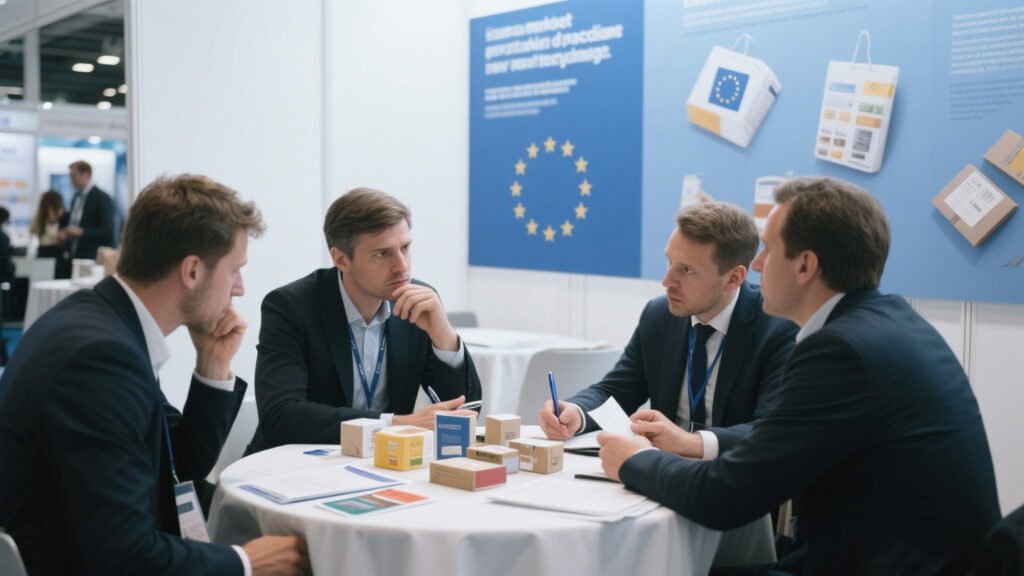
Verstoß gegen die Industrieverordnung: Diese Kunststoffverpackungen sind ab 2024 auf dem EU-Markt verboten Am 22. Januar 2025 verabschiedete der Europäische Rat offiziell die Verordnung über Verpackungen und Verpackungsabfälle (PPWR), die am 12. August 2026 vollständig umgesetzt werden soll. Die Verordnung, die als das strengste Verpackungsgesetz der Geschichte" bezeichnet wird, zielt darauf ab, Verpackungsabfälle bis 2040 um 15% zu reduzieren und die Standards für Kunststoffverpackungen durch Lebenszykluskontrollen zu überarbeiten. 1. Verbotsliste: Sechs Kunststoffverpackungen droht das "Todesurteil" Ab dem 1. Januar 2030 wird der EU-Markt verboten sein: Sammelverpackungen für den einmaligen Gebrauch: z. B. Schrumpffolien für Elektronikgeräte, Getränkedosenfolien; Kunststoffverpackungen für Frischwaren unter 1,5 kg: Obstnetze, Gemüseschalen; Mini-Toilettenflaschen für Hotels: Shampoo-Proben, Kosmetik-Testpackungen; Portionspackungen für Gewürze: Ketchup, Zucker, Kaffeesahne; ultraleichte Beutel: unter 15 Mikrometer dick; Verpackungen mit Lebensmittelkontakt, die PFAS enthalten: Grenzwerte von 25ppb pro PFAS-Verbindung. Fall: Der Hotelriese Accor ersetzte Miniflaschen durch an der Wand montierte Spender, wodurch jährlich 1 600 Tonnen Plastik eingespart werden. 2. Benchmarks für die Einhaltung: Die Überlebensschwellen der PPWR sehen abgestufte Ziele vor: Stufen der Rezyklierbarkeit: Klasse C bis 2030, Klasse B bis 2038 (mit Ausnahme von medizinischen/gefährlichen Verpackungen); Mindestanforderungen für den Recyclinganteil: Tabelle: Vorgeschriebener Recyclinganteil für Kunststoffverpackungen Verpackungstyp 2030 2040 Getränkeflaschen (PET) 30% 65% Lebensmittelkontakt 25% 50% Andere Kunststoffe 35% 65% Verpackungsminimierung: Leerraum ≤50%, unechte Böden/dicke Wände verboten 3. Chinas Sturm der Einhaltung: Kostensteigerungen vs. technische Durchbrüche Chinesische Exporteure stehen unter dreifachem Druck: Technische Hindernisse: Die EU verlangt PCR-Kunststoff aus Post-Consumer-Abfällen, aber in China gibt es keine Vorschriften für recyceltes Material in Lebensmittelqualität, was die Kosten für die Einhaltung der Vorschriften um 30% erhöht; Hürden bei der Zertifizierung: Erweiterte Herstellerverantwortung (EPR), 10-jährige EU-Konformitätserklärungen und QR-Rückverfolgbarkeitsetiketten; Kostenspitzen: PPWR-konforme Verpackungen kosten 40% mehr, und auf nicht konforme Exporte werden 25% Zölle erhoben. Ein Erfolgsbeispiel: Die Pergaminpapiertüten von Dongguan Dingliteng (3-6 Monate biologische Abbaubarkeit) haben die Zahl der Kundenreklamationen um 90% gesenkt und die Wiederkäufe um 25% erhöht. 4. Das "grüne Wettrüsten" der Industrie Führende Unternehmen passen sich an durch: Substitution von Materialien: Biobasierte Kunststoffe (z. B. DuPont SURLYN) für FDA-konforme Parfümkappen; kompostierbare Teebeutel (obligatorisch bis 2030) mit Folien aus Holzresten. Prozessinnovation: Lasergravur anstelle von Etiketten (japanische Marken); Technologie für trocken gereinigte Scherben (Fujian Great Wall Huaxing), die jährlich 440.000 Tonnen Wasser einspart. Integration der Kreislaufwirtschaft: Das "iRecovery"-Programm von Nestlé tauscht 5 Weichplastikverpackungen gegen einen recycelten Pflanzkübel und erhöht die Rücklaufquote um 40%. Fazit: Konforme Akteure überleben, Innovatoren dominieren PPWR verwandelt Verpackungen von einem "Kostenfaktor" in eine "Wertschöpfungskette" - wenn Estée Lauder's recycelte Flaschen 15% Prämien erzielen und chinesische Pergaminpapiertüten 70% der japanischen Bäckereibestellungen sichern, signalisiert dieser Sturm nicht nur Konformität, sondern eine Neuausrichtung der globalen Lieferkette. Wie der chinesische Verband für Kunststoffrecycling erklärt: "Plastik ist kein Schadstoff, sondern eine fehlgeleitete Ressource für das nächste Jahrzehnt." [email protected] +86-13699568326 9 AM to 6 PM, Mon-Friday Kontakt
Hotels mit Metall-Toilettenflaschen Command 23% Premium

Daten des Luxusreiseberichts: Hotels mit Metall-Toilettenflaschen erzielen 23% Premium 1. Das Verbraucher-Upgrade hinter den Daten Laut dem neuesten Luxury Travel Report erzielen Hotels, die Toilettenartikelflaschen aus Metall anbieten, 23% höhere durchschnittliche Zimmerpreise und 18% Wiederholungsbuchungen. Dies steht im Einklang mit den globalen Trends zum nachhaltigen Konsum: Öko-Premium: 73% der Verbraucher zahlen mehr für Öko-Verpackungen (Finnische Handelsagentur). Metallflaschen, die unendlich oft recycelt werden können und 32% weniger Kohlendioxidemissionen verursachen als Glasflaschen, sind heute ein Grundnahrungsmittel der Luxushotellerie. Erlebniswirtschaft: Taktile und visuelle Anziehungskraft treiben die Prämien in die Höhe. Das Gewicht und die matte Oberfläche der Aluminium-Magnesium-Legierung vermitteln "luxuriöse Beständigkeit", während Plastikflaschen "Wegwerf-Billigkeit" signalisieren. Politische Verschiebungen: Die EU schreibt vor, dass bis 2030 100% Plastik recycelt werden müssen, und Chinas Plastikbeschränkungen haben zu Beschwerden gegen 67% Hotels geführt, die Plastikartikel verwenden. 2. Dreifacher Werthebel von Metallflaschen 1. Material-Innovation: Von der Funktion zur Emotion Technische Leistung: Die Vakuum-Ionen-Beschichtung blockiert 99,5% UV-Licht und bewahrt die ätherischen Öle; magnetische Verschlüsse mit Silikondichtungen reduzieren die Sauerstoffdurchlässigkeit auf 0,01 cc/Tag. Ästhetisches Design: Die Mikro-Lichtbogen-Oxidation erzeugt matte Morandi-Farben, während die Lasergravur die chemisch bedruckten Etiketten ersetzt. 2. Nachhaltigkeit als Markenerzählung Geschlossener Recycling-Kreislauf: Das "Refill the Scent"-Programm von L'Oréal erreicht eine Wiederverwendung von 92% Metall gegenüber weniger als 14% für Plastikflaschen. Kohlenstoff-Verantwortung: Die Herstellung von 10.000 Metallflaschen spart 1,2 Tonnen CO2 im Vergleich zu Plastikflaschen - Daten, die in die ESG-Berichte des Hotels integriert sind. 3. Kostenrestrukturierung für langfristigen GewinnDie Metallflaschen kosten zwar im Vorfeld 40% mehr, senken aber die langfristigen Kosten: Behebung von Reklamationen: Beschwerden über Undichtigkeiten und Verderb gehen um 90% zurück (Fall Dingliteng); Marketing-ROI: Posts in den sozialen Medien mit dem Thema "Unboxing von Metallflaschen" führen zu 50% mehr Engagement und steigern die Direktbuchungen. Tabelle: Metallflaschen vs. Plastikflaschen Kosten-Nutzen-Analyse Metrik Metallflaschen Plastikflaschen Stückkosten ¥8-12 ¥2-5 Lebensdauer 5+ Jahre 1-2 Verwendungen Premium-Akzeptanz 73% 28% Jährliche Reklamationen 90% Reduktion Keine signifikante Veränderung 3. Umsetzungsstrategien für globale Hotels 1. Produktabstufung: Ausrichtung auf Gästesegmente Ultra-Luxus: Co-branded Parfüm-Editionen mit eingravierten Logos (z. B. das "Sunset Ceremony"-Set von Aman, das 8% Umsatz bringt); Geschäftsreisen: Modulare Designs, die in Gepäcksysteme integriert werden können. 2. Optimierung der Lieferkette Massenbeschaffung: Marriott geht eine Partnerschaft mit Estée Lauder ein, um CLARO-CR70 (70% recyceltes Metall) zu beschaffen, wodurch die Kosten um 15% gesenkt werden; lokale Produktion: Das chinesische Tsingpu Cultural Hotel arbeitet mit Fujian Great Wall Huaxing für regionales Metallrecycling zusammen. 3. Erweiterung der Dienstleistungen: Vom Verbrauchsgut zum Sammlerstück Treueprogramme: InterContinental bietet "Flaschen mit Namensgravur" an; für fünf leere Flaschen gibt es eine Gratisübernachtung; Branchenübergreifende IP: Die "City Skyline"-Serie von W Hotels mit lokalen Künstlern sorgt für UGC-Buzz. Schlussfolgerung: Premium-Preise als Wertresonanz Wenn Park Hyatt-Gäste Metallflaschen mit Berggravur mit nach Hause nehmen oder Tsingpus recycelte Container sich in Lampen verwandeln, geht der Wettbewerb im Gastgewerbe über die Hardware hinaus - hin zu nachhaltigem Luxus. Die 23%-Prämie für Metallflaschen spiegelt die Bezahlung für ökologische Verantwortung und emotionale Handwerkskunst wider. Der Luxury Travel Report kommt zu dem Schluss: Der ultimative Luxus beim Reisen in der Zukunft ist eine Welt, in der der Planet und die Menschenwürde gleichermaßen geschätzt werden. [email protected] +86-13699568326 9 AM to 6 PM, Mo-Freitag Kontakt
Metallversiegelte Flaschen verlängern die Lebensdauer von Zitrusdüften bei 270%
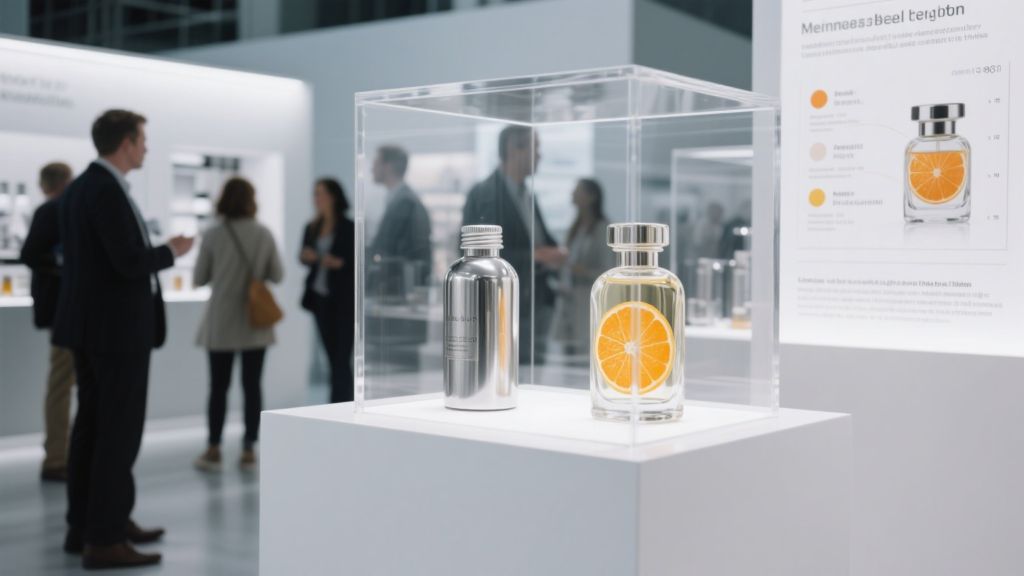
Parfümeur Labor Leck: Metallversiegelte Flaschen verlängern die Lebensdauer von Zitrusdüften by 270%
Warum Hermès-Lieferanten die gleiche Technologie wählen

Das Geheimnis des Eloxierens: Warum Hermès-Lieferanten die gleiche Technologie wählen Eloxieren: Von der industriellen Grundlage zur Luxusrevolution Eloxieren ist ein elektrochemischer Prozess, der eine dichte Aluminiumoxidschicht (Al₂O₃) auf Aluminiumoberflächen bildet. Diese Beschichtung erreicht 80% der Saphirhärte (Mohs 8-9) und ermöglicht aufgrund ihrer mikroporösen Struktur durch Farbstoffaufnahme und -versiegelung einen präzisen Farbausdruck - von mattem Schwarz bis Hermès-Orange. Sein wahrer Wert geht jedoch über die Ästhetik hinaus. Die Integration von Siliziumwafern in Halbleiterqualität hat das Eloxieren zu einer "Tarnkappenpanzerung" für die High-End-Fertigung gemacht. Die Uhr Cape Cod Crépuscule 2022 von Hermès ist ein Beispiel dafür: Für das Zifferblatt wird ein 0,5 mm dicker Siliziumwafer verwendet, der mit einer 72 nm dicken Siliziumnitridschicht beschichtet ist, die mit blauem Licht geätzt wird, um Sonnenuntergangsverläufe mit Nanometerpräzision zu erzeugen. Dieser branchenübergreifende Technologietransfer ist die Grundlage für die Wahl der Eloxierung bei Luxusmarken. Die ultimative Wahl von Hermès: Drei technische Barrieren Farbbeständigkeit Eloxierte Mikroporen absorbieren organische Farbstoffe, die dann durch kochendes Wasser oder Nickelsalze versiegelt werden, wodurch eine tiefe Durchdringung statt einer Oberflächenbeschichtung gewährleistet wird. Die Zulieferer von Hermès setzen Titan-Fördersysteme ein, um die Farbschwankungen der Chargen auf ΔE≤0,5 (visuell nicht nachweisbar) zu begrenzen, was weit über dem Industriestandard ΔE≤2 liegt. Im Vergleich zur Galvanisierung: Galvanische Schichten lösen sich leicht ab und enthalten Cyanide, während anodisierte Schichten chemisch mit dem Substrat verbunden sind. Nach 1.200 Stunden beschleunigter UV-Alterung erreicht die Farbbeständigkeit 98%, was eine Abwertung des Luxus durch Verblassen verhindert. Ökologischer und leichter Durchbruch Chanel ersetzte 2023 das verzinkte Messing der Chance-Parfümflaschen durch eloxierte Aluminiumstreifen, wodurch das Gewicht pro Flasche um 40% reduziert wurde. Das Recycling von Aluminium verbraucht nur 5% an Energie aus neuem Erz. EU-Studien zeigen, dass der Kohlenstoff-Fußabdruck von Aluminiumverpackungen nach 50 Recyclingvorgängen um 90% niedriger ist als der von Kunststoffen - was perfekt zu den ESG-Strategien für Luxusgüter passt. Kostenvorteil: Das Eloxieren erfordert Reinräume und die Behandlung von Schwermetallabwässern, was die Vorlaufkosten im Vergleich zur Galvanisierung um 20% erhöht. Dennoch ermöglicht es eine 30%-Markenprämie, wie bei den Parfüms von Hermès aus eloxiertem Aluminium. Molekulare Verschmelzung von Funktion und Kunst In medizinischen Geräten erzielen anodisierte, mit Silberionen versehene Folien eine antibakterielle Wirkung von 99,9%. In der Luxusindustrie tragen Hermès-Zulieferer Beschichtungen aus Seltenerdmetalloxid in Mikroporen auf, um Fingerabdrücke zu vermeiden und Ölflecken auf Uhren zu vermeiden. Kontrolle der Lieferkette: Der vom Schweizer CSEM für Hermès entwickelte Fotolithografieprozess umfasst drei Reinstwasserspülungen (Widerstand ≥18 MΩ-cm - entspricht dem von Spritzwasser) zwischen den Blaulichtätzschritten, um durch Ionenverschmutzung verursachte Flecken zu vermeiden. Branchengeheimnisse: Warum beherrschen nur führende Unternehmen Core Tech? Reinheit des Materials: Aluminium für die Luft- und Raumfahrt (z. B. 6061-T6) lässt Verunreinigungen von ≤0,15% zu; Luxusgüter erfordern ≤0,05%. Japanische Anbieter verwenden dreifache elektrolytische Raffination, was die Kosten im Vergleich zu Industriealuminium verdreifacht. Versiegelungsmonopol: Bei der konventionellen Eloxierung wird mit kochendem Wasser versiegelt, was zu säurebedingten Rissen führen kann. Hermès-Lieferanten verwenden eine Teflon-Nanodispersionsversiegelung, die einen 110°-Wasserkontaktwinkel und eine 5× bessere Beständigkeit gegen Kaffeeflecken aufweist. Disziplinübergreifende Barrieren: Zifferblätter für Silizium-Wafer benötigen Halbleiter-Ätzwerkzeuge, während das Eloxieren von Aluminium eine chemische Einfärbung voraussetzt. Hermès arbeitet mit CSEM und g.pivaudran zusammen, um die gesamte Kette "Photolithographie + Eloxieren + Färben" zu kontrollieren - eine Leistung, die kleine Fabriken nicht erbringen können. Leistungstest: Gleiches Aluminiumsubstrat, zwei Behandlungen - Gruppe A: Industrielle Eloxierung (10μm Dicke) Gruppe B: Luxusqualität (25μm + Beschichtung mit seltenen Erden)Ergebnis: Die Gruppe B zeigte eine 3× höhere Verschleißfestigkeit und keine Korrosion nach einem 1.000-stündigen Salzsprühtest, bei 8× höheren Kosten. Nachhaltige Luxus-Zukunft: Die Innovationen der grünen Evolution der Eloxierung werden immer schneller: Wasserstoffbetriebene Bahnen: Shenzhen Dingli Eco-Tech entwickelte eine mit grünem Wasserstoff betriebene Anlage, die die Kohlenstoffemissionen von 1,8 t/t auf 0,2 t/t senkt und dafür von LVMH mit dem Supply Chain Innovation Award ausgezeichnet wurde. Geschlossener Recycling-Kreislauf: Das in den USA ansässige Unternehmen Anomatic reinigt Aluminiumabfälle durch Zerkleinerung-Schmelz-Elektrolyse und erreicht dabei eine Reinheit von 99,5% für Chanel-Flaschen, wodurch die CO₂-Emissionen um 9,5 t pro Tonne gesenkt werden. Intelligente farbverändernde Folien: Eine im Labor entwickelte Technologie bettet elektrochrome Polymere in Eloxalschichten ein. Zukünftige Hermès-Taschen können die Farbe des Verschlusses über eine Smartphone-App wechseln und ermöglichen so "ein Objekt, unendlich viele Gesichter". Epilog: Die Entwicklung des Eloxierens von der Militärtechnik zum Luxuscode verkörpert ein Paradoxon der Materialdemokratisierung: Es baut Wände mit nanoskaliger Präzision, löst aber den Konflikt zwischen Opulenz und Nachhaltigkeit durch Kreislauffähigkeit auf. Wenn die Fingerspitzen über die matte Textur einer Aluminiumflasche von Hermès streichen, berühren sie nicht nur titanpolierte Kälte, sondern eine Dreifaltigkeit aus Halbleiter, Chemie und künstlerischer Weisheit. Wahrer Luxus trennt sich nie von der Wissenschaft - er versteckt sich lediglich in anodischen Mikroporen und wartet darauf, dass die Zeit ihn mit einzigartigen Farbtönen färbt. Leistung: Aluminium vs. eloxiertes Aluminium Metrisch Roh-Aluminium Eloxiertes Aluminium Oberflächenhärte Mohs 2-3 Mohs 8-9 Korrosionsbeständigkeit Rost nach 500 Stunden Salzsprühnebel Keine Korrosion nach 1.000 Stunden Farbbeständigkeit Verblassen in 1 Jahr ΔE≤1,5 nach 10 Jahren Wiederverwendungszyklen Nicht wiederverwendbar 50+ Carbon Footprint 16t CO₂/t (Neuware) 0,5t CO₂/t (recycelt) [email protected] +86-13699568326 9 AM to 6 PM, Mon-Friday Kontakt
Wie eine Aluminiumflasche 17 Interkontinentalflüge absichert
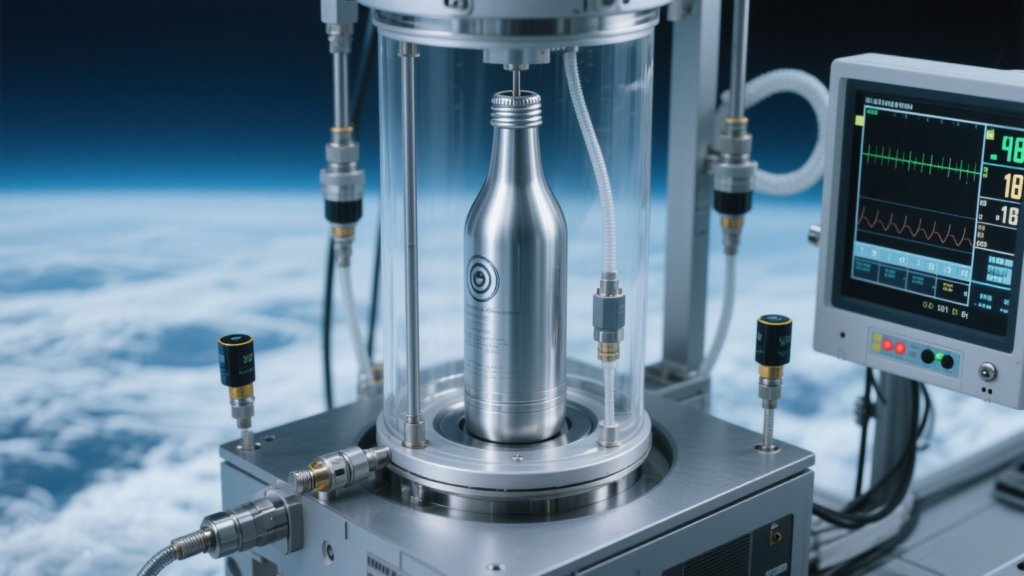
Wie eine Aluminiumflasche 17 Interkontinentalflüge sichert Als Boeings Starliner-Raumschiff wegen eines Heliumlecks neun Monate lang im Weltraum festsaß, war die Welt fassungslos - eine Leckrate von 0,25 kg pro Stunde verwandelte das $4,2 Milliarden teure Raumschiff in ein "Weltall". Diese Katastrophe enthüllte ein unsichtbares Schlachtfeld in der Industrie: Ein Leck, so dünn wie ein Haar, kann den großen Plan der menschlichen Technologie umstürzen. I. Leckagerate: Der unsichtbare Killer und die Grenzen zwischen Leben und Tod In der Luft- und Raumfahrt ist Helium das "Blut", das den Druck der Treibstoffzufuhr aufrechterhält. Das Heliumleck bei Boeing erreichte das 25-fache des Warnwerts (0,25 kg/Stunde) und führte zum Ausfall der Triebwerke wie eine "gerissene Arterie". Dahinter verbirgt sich das Präzisionsspiel der Leckagerate: Raumfahrttaugliche Abdichtung: Die Treibstofftanks des Apollo-Programms erforderten Leckraten ≤1×10-⁶ mbar-L/s - das entspricht dem Verlust eines Gasvolumens, das nicht größer als eine Mungobohne ist, über 20 Jahre hinweg; medizinische Sicherheitsleitungen: Europäische Beatmungsgeräte mit Leckageraten >1×10-⁵ mbar-L/s reduzieren den Blutsauerstoff des Patienten um 0,3% und begeben sich damit in einen lebensbedrohlichen Bereich; Tägliche Gefahren: Die japanische JIS-Norm warnt, dass ein jährliches Wasserstoffleck von 0,3 Litern in einer versiegelten Garage in nur 8 Stunden 4% UEG (untere Explosionsgrenze) erreichen kann. Das russische Segment der ISS mit seinem anhaltenden Luftleck (bis zu 1,7 kg/Tag in fünf Jahren) zeigt die fatalen Mängel der veralteten Infrastruktur bei der langfristigen Abdichtung auf. II. Die Alchemie der Null-Leckage: Von Luft- und Raumfahrtnormen zu Aluminiumflaschentests Um Lecks zu zähmen, entwickelten Wissenschaftler zwei Arten von "mikroskopischen Augen": Die Druckabfallmethode: Das "Blutdruckmessgerät" der Industrie berechnet die Leckage durch Messung des Druckabfalls: Leckrate = Druckunterschied × Volumen ÷ Zeit. Geeignet für das Screening in der Produktionslinie, aber fehleranfällig (bis zu 18% bei ΔT>15°C). Helium-Massenspektrometrie: Molekulare BluthundeFüllt Zylinder mit Helium-Tracergas, das von Massenspektrometern detektiert wird, und erreicht dabei eine Empfindlichkeit von 1×10-¹² mbar-L/s - das entspricht der Entdeckung eines verdampfenden Tropfens im Pazifischen Ozean. SpaceX nutzte dies zur Optimierung der Ventilredundanz, während Boeing den Fehler nicht reproduzieren konnte und seine Astronauten zur Rückkehr mit einer gebrauchten SpaceX-Dragon-Kapsel zwang. III. Die Metapher von 17 Flügen: Revolutionierung der Sicherheitsökonomie Die Gleichung "ein Aluminiumzylinder = 17 Interkontinentalflüge" offenbart einen exponentiellen Sprung in den Sicherheitsmargen: Boeings durch ein Leck abgebrochene Rückkehr der Besatzung kostete 2.Wasserstoff-Fahrzeugzylinder, die die ISO 15848-Tests bestehen, halten einem Berstdruck von 87 MPa mit <10-⁶ mbar-L/s Leckage stand, was eine 850 km weite Strecke von Paris nach Moskau ermöglicht[Zitat:5]; ein einziger Aluminiumzylinder in Raumfahrtqualität, der in extremen Drucktests leckagefrei ist, könnte herkömmliche Treibstoffbehälter für 17 Flüge ersetzen und die Risiken für die Wiederversorgung um 90% senken. IV. Arroganz hinter dem Feigenblatt: Wenn Normen zu Wortspielen werden Doch der Weg zur Leckfreiheit ist mit Fallen gespickt: Fehler in der Formel: Die ISO-Leckformel (die auf eine Studie von Volkswagen aus dem Jahr 1992 zurückgeht) weist bei Temperaturschwankungen alarmierende Fehler auf; Normenkriege: Die europäische Norm EN 12245 verbot einst die Druckabfallmethode, nachdem sie bei einer LNG-Tankerkatastrophe Lecks übersehen hatte, und machte später einen Kompromiss, indem sie eine Infrarotunterstützung vorschrieb - eine Regel, die 90% der Ingenieure nicht kannten; Chaos bei den Einheiten: In einer hochrangigen Fachzeitschrift wurde mbar-L/s mit Pa-m³/s verwechselt, was die Ergebnisse um das 100-fache verfälschte. Ironischerweise behaupten russische und US-amerikanische Beamte immer noch, dass die ISS täglich 1,7 kg Luft entweichen lässt und keine Bedrohung darstellt34 - ein Echo auf den Applaus im Boeing-Kontrollzentrum beim Start des Starliners. Fazit: Lichtjahre jenseits der Risse Von Raumfahrzeugen bis hin zu Wasserstoffzylindern ist die Leckagekontrolle letztlich eine Korrektur der menschlichen Hybris. Wenn sich ein Aluminiumzylinder unter einer hydraulischen Presse verformt, ohne dass ein Tropfen austritt, oder wenn eine gebrauchte Dragon-Kapsel gestrandete Astronauten nach Hause bringt - dann bedeutet Null-Leckage den Mut, Feigenblätter abzuwerfen und Demut in die Schweißnähte der Arroganz einzubetten. Die Zukunft gehört denen, die Standards in Moleküle eingravieren und Sicherheit in den Kosmos schreiben - denn die Sterne lassen keinen Platz für Spielchen. [email protected] +86-13699568326 9 AM to 6 PM, Mo-Fr Kontakt
Wie SCHOTT Glas zarte Parfümeriekunst bewahrt
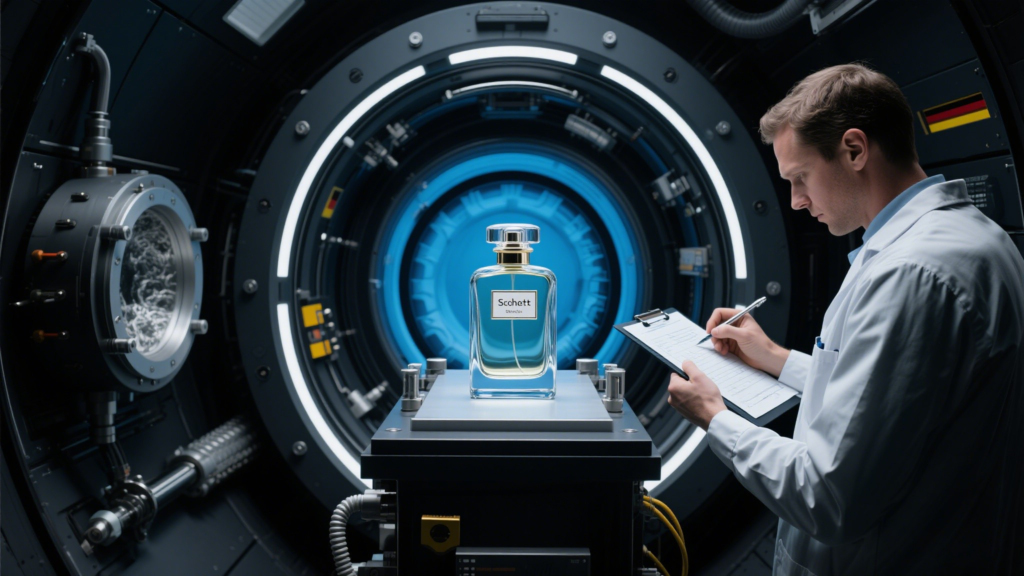
Jenseits von Aluminium aus der Luft- und Raumfahrt: Wie SCHOTT Glas die Kunst der Parfümerie bewahrt - Wenn jahrhundertealtes Glashandwerk auf molekulare Duftkunst trifft Die dreifache Nemesis des Parfüms: Licht, Sauerstoff und Verschmutzung Die Seele der Nischenparfümerie liegt in den flüchtigen Kopfnoten - Limonen und Linalool verdampfen 300-mal schneller als Ethanol. Doch diese empfindlichen Moleküle sind dreifach bedroht: UV-Zersetzung: Direkte Sonneneinstrahlung zersetzt 15% der Aldehydnoten in 3 Stunden, wobei schädliche Nebenprodukte wie Benzaldehyd entstehen; Oxidation: Vanillin verwandelt sich in ranzige Verbindungen, die den sauren Geschmack innerhalb von sechs Monaten um das Dreifache verstärken; Chemische Auslaugung: Phthalate aus Plastikflaschen verbinden sich mit Terpenen und erzeugen "Plastikgeruch" und krebserregende Nitrosamine. Labortest: Gleiches Parfüm in SCHOTT Glas vs. Aluminium aus der Luft- und Raumfahrtindustrie nach 30 Tagen bei 40°C: SCHOTT: 91,2% Dufterhaltung, keine Verfärbung; Aluminium: 12% Rosenoxidabbau aufgrund von Mikroporen in der Epoxidbeschichtung und Metallionenkatalyse. Der dreifache Schutzmechanismus von SCHOTT 1. Inertheit in pharmazeutischer Qualität: Null AuslaugungBorosilikatglas (10% Bor, 7% Aluminiumoxid) bildet eine "Platinbarriere": Ionensperre: Bor-Kieselerde-Netzwerk verhindert das Auslaugen von Metallionen; Extreme Korrosionsbeständigkeit: Widersteht pH 1-14, undurchlässig für Parfümethanol (70%-90%); GMP-zertifizierte Reinheit: Reinraum der ISO-Klasse 5 (≤3.520 Partikel/m³), übertrifft kosmetische Standards. 2. UV-Attentäter: Braunes Glas als molekulare AbschirmungEisen/Mangan-dotiertes braunes Glas erreicht eine präzise Lichtfilterung: 99,7% UV-Blockierung: Nur 0,3% Durchlässigkeit unter 450nm Wellenlänge; IR-reflektierende Beschichtung: Wärmereduzierung in Automobilqualität minimiert die thermische Oxidation. Historischer Beweis: Das Medikament "Sympatol" aus dem Jahr 1939 behielt seine Wirksamkeit von 98,8% nach 50 Jahren in SCHOTT-Braunglas. 3. Hermetische Versiegelung: Übertrifft die Standards der Luft- und RaumfahrtVakzinefläschchentechnologie für die Parfümerie: Laser-Fusion: Flaschenhalsspalt <0,1μm, Sauerstoffdurchlässigkeit <10-⁸ mbar-L/s (Weltraumtauglichkeit); Helium-Lecktests: Defektrate <2 PPM vs. 5% für Aluminiumflaschen mit Beschichtungsfehlern. Warum Luxusmarken sich weigern, Kompromisse einzugehen? Die Hierarchie der Materialsicherheit als ultimativer Luxus Chanel No. 5 und Guerlain's "Vol de Nuit" verwenden SCHOTT-Glas, in dem 11 EU-regulierte Giftstoffe nicht nachgewiesen werden können, im Gegensatz zu 92,3% Phthalatauswaschungen aus Plastik; Parfümeur Francis Kurkdjian erklärt: "Wahrer Luxus weigert sich, sich mit dem Verfall zu verbünden" - die von SCHOTT konservierten Parfums aus dem Jahr 1937 bewahren intakte Kopfnoten. Durchbruch im Paradoxon der KreislaufwirtschaftWährend das Recycling von Aluminium 5% an Energie aus neuen Erzen verbraucht, erreicht SCHOTT Glas eine "unendliche Wiedergeburt": 50+ Wiederverwendungen mit 98% Stärke: Aluminium-Epoxidauskleidungen bauen sich nach 50 Wiederbefüllungen ab; schadstofffreies Recycling: Beim Schmelzen werden keine flüchtigen organischen Verbindungen freigesetzt, im Gegensatz zu Mikroplastik-/Dioxinemissionen beim Kunststoffrecycling. Material Narrative of Brand ValueLVMH Sourcing Director verrät das Ethos der Branche: "Glas ist die Rüstung des Handwerks, Kunststoff ist die weiße Fahne des Kompromisses. SCHOTTs ±0,01 mm Präzisionsschnitt und 92,1% Lichtdurchlässigkeit verwandeln Parfüm in Lichtkunst." Kampf um die Zukunft: Green Tech Reimagines Preservation SCHOTT leistet Pionierarbeit bei der wasserstoffbetriebenen Glasherstellung: 1.700°C Zero-Carbon Melting: Grüner Wasserstoff ersetzt Gas und senkt den Kohlenstoff-Fußabdruck von 1,8 t auf 0,2 t pro Tonne; Ultradünnes Glas für Nachfüllungen: 16 Mikron SCHOTT UTG® Flex (zwei rote Blutkörperchen dick) ermöglicht Vakuum-Parfumspender mit 200-fach besserem UV-Schutz als Kunststoff. Epilog: Bewahrung der olfaktorischen Zivilisation auf molekularer Ebene Die Einbettung von Nischenparfüm in SCHOTT Glas verewigt die flüchtige Inspiration der Parfümeure mit jahrhundertealter Materialwissenschaft. In einer Ära der Wegwerftrends beweist SCHOTT: Wahre Bewahrung kämpft nicht gegen die Zeit - sie macht die Zeit zu einem Verbündeten des Duftes. Diese jahrhundertealten Kopfnoten sind eine Poesie der menschlichen Kreativität: Nur die ultimative Reinheit kann die ultimative Zerbrechlichkeit tragen. Parfümbehälter Leistungsvergleich Metrisch Luft- und Raumfahrt Aluminium SCHOTT Medizinisches Glas Chemische Auslaugung Sehr gering (beschichtungsabhängig) Null UV-Blockierung 85%-92% 99,7% Wiederverwendungszyklen 50 Unendlich O₂ Permeabilität ≤0,1 cc/pkg-Tag ≤10-⁸ mbar-L/s Carbon Footprint (kgCO₂/Tonne) 520 200 (2030 Ziel) [email protected] +86-13699568326 9 AM to 6 PM, Mon-Friday Kontakt
Warum verwenden Luxusmarken niemals Plastikspender?
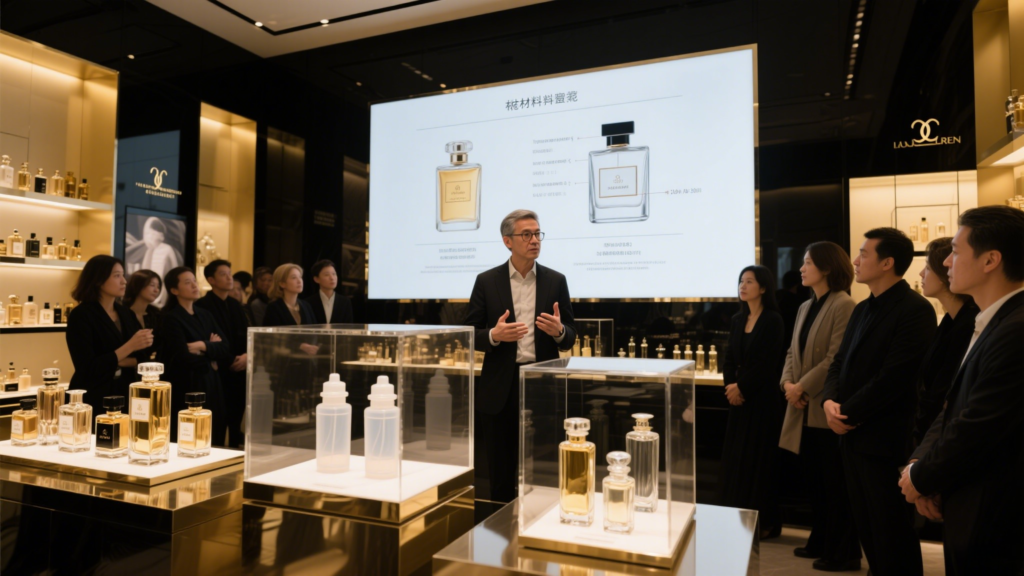
Warum verwenden Luxusmarken niemals Plastikspender? Materialwissenschaftler deckt Branchengeheimnisse auf Als Watsons wegen "kostenloser selbstspendender Toilettenartikel für Mitglieder" zu einer Geldstrafe von 153.000 Yen verurteilt wurde, kam eine verborgene Branchenregel ans Licht: Hermès, Chanel und andere Luxusmarken verwenden niemals Plastikspender für Parfums oder Hautpflegeprodukte - auch wenn die Kosten um 70% sinken könnten. Materialwissenschaftler argumentieren, dass dies auf ein Dreiergespann aus chemischer Sicherheit, Markenwert und Verbraucherpsychologie zurückzuführen ist. Die "drei Todsünden" des Plastiks: Von der Verunreinigung bis zur Abwertung Unkontrollierbare chemische AuslaugungPhthalate in Kunststoffen laugen 300% schneller aus, wenn sie Alkohol oder ätherischen Ölen ausgesetzt sind. Schweizer Labortests zeigen, dass 92,3% der in Plastikflaschen abgefüllten Parfums endokrin wirksame Substanzen freisetzen und mit Aldehyden krebserregende Nitrosamine bilden. Die Kennzeichnung "BPA-frei" ist eine Marketingfalle - Ersatzstoffe wie BPS und BPF imitieren Östrogen und sind in der EU verboten. Fragrance AssassinationUV-Licht und Hitze lösen molekularen Abbau aus: PET-Poren (0,5-2μm) adsorbieren flüchtige Moleküle wie Limonen und beschleunigen so die Oxidation; bei 30 °C (z. B. in Ladenregalen) steigt die chemische Migration um 400% und erzeugt metallisch riechendes Benzaldehyd69. In Tests verlor Dior J'adore nach 30 Tagen 43% Rosenoxid im Kunststoff, während Glas 91% bewahrte. Erosion des LuxuswertsPlastik symbolisiert die "Dupe-Kultur" - wie die "Wirkin-Tasche" von Walmart (Hermès Birkin-Imitat) signalisiert es billige Alternativen. Fast 50% der Luxuskonsumenten halten die Markenprämien für überhöht, und Plastikverpackungen verschärfen diese Wahrnehmung noch. Wie der Direktor für Beschaffung von LVMH erklärte: "Glas ist die Rüstung der Handwerkskunst; Plastik ist die weiße Fahne des Kompromisses." Das Materialwettrüsten der Luxusmarken Um den Risiken von Kunststoffen zu begegnen, setzen führende Unternehmen drei Strategien ein: Monopol auf medizinisches GlasSchott-Glas mit Borosilikatstruktur und GMP-Zertifizierung ist exklusiv für Chanel No. 5 und Guerlain's "Vol de Nuit". Es blockiert 99,7% der UV-Strahlen und bewahrt so die alten Parfums von 1937. Keine Auslaugung steht im Einklang mit dem Motto "Ewiges Erbe". Revolution des MetallkreislaufsMarriott verzeichnete nach der Umstellung auf Aluminiumflaschen eine Wiederkaufrate von 34% bei Düften. Die mit lebensmittelechtem Epoxidharz ausgekleideten und mit RFID-Tracking ausgestatteten Flaschen (mehr als 50 Mal wiederverwendbar) erfüllen die EU-Ziele für wiederverwendbare Verpackungen bis 2030 und ermöglichen individuelle Pantone-Farben wie Hermès-Orange. Regulatorische ArbitrageChinas Kosmetikvorschriften schreiben vollständige Inhaltsstofflisten auf minimalen Verkaufseinheiten vor - unmöglich für Plastikproben. Marken wie Skinceuticals von L'Oréal und Le Labo haben "Lizenzen für Vor-Ort-Anpassungen" für die legale Abgabe in Shanghaier Boutiquen erhalten, wobei vorsterilisiertes Braunglas unter Aufsicht von zertifiziertem Personal verwendet wird. Die Illusion der Nachhaltigkeit: Das Paradoxon der Wiederverwendung von Kunststoffen Die Kunststoffindustrie steht vor neuen Dilemmata bei der Innovation: Recycling-Mythos: Nur 9% der Kunststoffe werden weltweit recycelt. "Recycelter Kunststoff" setzt nach wiederholtem Schmelzen mehr Mikroplastik frei. Die Investition von Cadbury in die Recyclingtechnologie von Licella kann die Nachfrage von 1% an lebensmitteltauglichen Kunststoffen nur schwer decken. Kostenfalle: HPF1000-Harz ist 90% besser hydrolysebeständig, kostet aber 20% mehr und erfordert sterile Abfüllanlagen, die die Einsparungen zunichte machen. Das Erwachen der Verbraucher: Gen Z's Material Politics Mit #dupe Ansichten von mehr als 10 Milliarden auf TikTok, definieren Jugendliche Luxus durch Werte neu: Sicherheit als Luxus: 78% zahlen 15% Prämien für plastikfreie Verpackungen; Phthalat-Testberichte überwiegen das Markenerbe. Kreislaufwirtschaft als Gerechtigkeit: Aluminiumrecycling verbraucht 5% an Energie aus neuen Erzen im Vergleich zu 70% für Plastik - die Wahl des Materials wird zum moralischen Lackmustest.Parfümeur Francis Kurkdjian erklärte: "Wahrer Luxus ist die Weigerung, sich mit dem Verfall zu verbünden." Schlussfolgerung: Material als Klassenchiffre Die Abwesenheit von Plastik im Luxus entlarvt eine unausgesprochene Regel: Die Verpackung ist eine Klassenmetapher, das Material ist eine Wertvorstellung. Inmitten der "Dupe"-Revolution befestigen Marken ihre Festungsgräben mit Glas und Metall - um chemische Risiken zu vermeiden, Premium-Autorität zu verteidigen und den Konsumismus zu persiflieren. Vielleicht liegt der Luxus der Zukunft in dem unausgesprochenen Subtext: "Wir meiden Plastik, weil Sie keine Verunreinigung verdienen." Vergleich der wichtigsten Sicherheitsleistungen Metrische Kunststoffflasche Medizinisches Glas Lebensmittelgeeignetes Aluminium Chemische Auslaugung Hoch (Phthalate) Null Sehr niedrig (Epoxidauskleidung) VOC-Emission 46μg/h 2,1μg/h 5,3μg/h Wiederverwendungszyklen Einmalige Verwendung Unendlich 50+ Recycling CO₂-Reduzierung 30% 85% 95% [email protected] +86-13699568326 9 AM to 6 PM, Mo-Fr Kontakt
Der ultimative Feind der Luxusparfums

Der ultimative Feind der Luxusparfums: In Plastikflaschen versteckte chemische Verunreinigungen Wenn ein tausend Dollar teures Luxusparfüm in eine Plastikflasche gefüllt wird, beginnt eine stille chemische Invasion. Im Jahr 2025 zeigten Schweizer Labortests an 20 in Plastikflaschen abgefüllten Parfüms, dass 92,3% Phthalate auslaugte, während einige aldehydische Duftmoleküle sich mit Kunststoffzusätzen zu krebserregenden Nitrosaminen verbanden. Diese Verunreinigungen dringen mit 0,07 μg/h in das Parfüm ein - genug, um 15% der Kopfnoten eines Zitrusparfüms innerhalb von sechs Monaten abzubauen und es auf der Haut des Trägers in ein "langsam freigesetztes Gift" zu verwandeln. Toxischer Hausfriedensbruch: Die dreifache Bedrohung durch Plastik - Phthalate: Heimlicher Angriff auf die FortpflanzungTests des CDC in Peking zeigen, dass 92,3% der in Plastikflaschen abgefüllten Parfums Phthalate enthalten. Diese endokrin wirksamen Substanzen schädigen in Tierversuchen die Leber- und Nierenfunktion und verringern die Spermienzahl. Wenn Parfüms Alkohol oder ätherische Öle enthalten, lösen sich die Weichmacher 300% schneller und gelangen durch Hautkontakt in den Blutkreislauf. VOCs: Unsichtbares Gift für die LuftNOAA-Forschungen bestätigen, dass flüchtige organische Verbindungen (VOC) aus Parfüms und Shampoos inzwischen 50% der Luftverschmutzung in Städten ausmachen - genauso viel wie die Emissionen von Kraftfahrzeugen. Plastikflaschen beschleunigen diese Entwicklung: Durch ihre Durchlässigkeit können die VOCs mit dem Sonnenlicht reagieren und Ozon und PM2,5 bilden. Bei der Luftüberwachung in Los Angeles wurde festgestellt, dass die von Parfüm abgeleiteten Schadstoffe um 200% über den vorhergesagten Werten liegen. Aldehyd-Mutation: DuftkorruptionLabortests zeigen, dass das Vanillin von Chanel No. 5 in Plastikflaschen zu Benzaldehyd oxidiert und einen metallischen Geruch erzeugt. In der Zwischenzeit zerfallen Zitrusmoleküle wie Limonen in Terpenoxide, die Hautallergien auslösen und mit Antioxidantien aus Kunststoffen reagieren, um krebserregende Stoffe zu bilden. Synergistische Sabotage: Warum Plastik und Parfüm kollidieren Plastik steht in aktiver Wechselwirkung mit der Duftchemie: Molekulare Fallen: Die Elektronenmikroskopie zeigt 0,5-2μm große Poren in Surlyn-Flaschen. Ethanolmoleküle bombardieren diese Hohlräume und laugen Weichmacher und Antioxidantien aus. Wärmebeschleunigung: Bei 30 °C (z. B. in Sommerautos) steigt die chemische Migration auf 400% an. Gleichzeitig bündelt die Krümmung der Flasche das Licht wie eine Linse und bricht die Duftmoleküle. Fixiermittel-Paradoxon: Diethylphthalat (DEP), das zur Duftverlängerung verwendet wird, ist ein in der EU verbotenes Reproduktionstoxin. Es bindet den Duft an die Haut, reichert sich aber auch im Fettgewebe an. Laborbericht: Dior J'adore in Glas- und Surlyn-Fläschchen bei 40°C für 30 Tage gelagert: Glas: 91,2% Dufthaltigkeit Kunststoff: 8x Phthalat, 43% Rosenoxidabbau. Belastung des Körpers: Vom Ausschlag bis zu Zellschäden Die gesundheitlichen Auswirkungen gehen weit über den Geruchsverstoß hinaus: Allergie-Epidemie: 32% der Kontaktdermatitis-Patienten reagieren auf Linalool-Oxide - Produkte des durch Kunststoffe katalysierten Duftstoff-Zerfalls. Die Fälle von "Parfümverbrennungen" (schmetterlingsförmige Pigmentierung) sind in zwei Jahren um 70% gestiegen. Hormonelle Kriegsführung: Die Östrogen nachahmenden Eigenschaften von Phthalaten erhöhen das Brustkrebsrisiko um 18% und die Fehlgeburtenrate um 12% bei Langzeitkonsumentinnen. Angriff auf die Lunge: Asthmatiker, die VOC aus abgebauten Parfüms ausgesetzt sind, erleiden Bronchospasmen, die denen des Passivrauchens entsprechen. Erlösung: Materialrevolution und Verbrauchererwachen Barrieren medizinischer Qualität: Glas und Metall Renaissance Schott-Glas mit GMP-Zertifizierung und ohne Auslaugung wird von Chanel und Guerlain verwendet. Seine Borosilikatstruktur blockiert 99,7% UV-Strahlung und bewahrt das "Vol de Nuit" von 1937 intakt. Aluminiumflaschen mit lebensmittelechter Epoxidharzbeschichtung und RFID-Verfolgung erzielen in Marriott-Hotels eine Wiederkaufsrate von 34% bei Düften. Kreisförmige Materialien: Die Neuerfindung des KunststoffsDow Chemical und Brivaplast recyceln Abfälle von Surlyn-Kappen zu Schuhzubehör und verringern so den CO2-Fußabdruck um 62%. Das neue HPF1000-Harz erfüllt die FDA-Normen mit 90% besserer Hydrolysebeständigkeit, kostet aber 20% mehr. Politischer Durchbruch: Von der Vermeidung zur Beseitigung: Die EU verbietet 11 Chemikalien (darunter Phthalate und Formaldehydabspalter) in Parfüms und schreibt Etiketten für das Kunststoffrecycling vor. Chinas aktualisierte Verordnung zur Sicherheit von Kosmetika sieht Geldstrafen von bis zu 500.000 ¥ für nicht bestandene Migrationstests vor. Schlussfolgerung: Wiederherstellung der Grenzen zwischen Duft und Gift Der Parfümflakon aus Plastik verkörpert ein Paradoxon: Er untergräbt die Schönheit durch molekulare Korrosion. Die Rettung liegt nicht in der Abkehr von der Technologie, sondern in der Rückgewinnung der Ehrfurcht - in der Versiegelung ephemerer Kunstwerke in Glas, in der Beendigung der ewigen Vergiftung durch Kreislaufwirtschaft. Wahrer Luxus beginnt, wenn wir die falsche Bequemlichkeit von Plastik ablehnen und zur Reinheit zurückkehren - wo Materialien das Leben selbst ehren. Vergleich der Materialsicherheit Metrische Kunststoffflasche Medizinisches Glas Öko-Aluminium Chemische Auslaugung Hoch (Phthalate) Null Sehr niedrig (lebensmittelechte Auskleidung) VOC-Emissionen 46μg/h 2,1μg/h 5,3μg/h Wiederverwendungszyklen Einmalig Unendlich 50+ Recycling CO₂-Reduzierung 30% 85% 95% [email protected] +86-13699568326 9 AM to 6 PM, Mo-Freitag Kontakt
